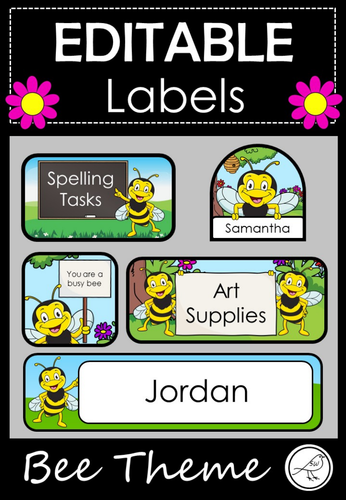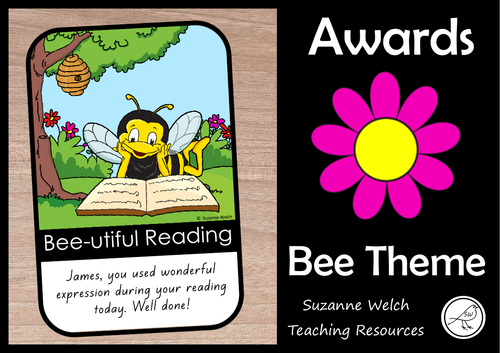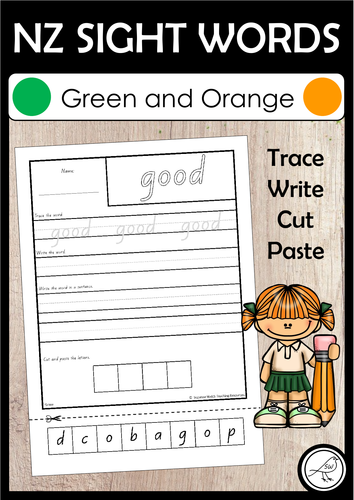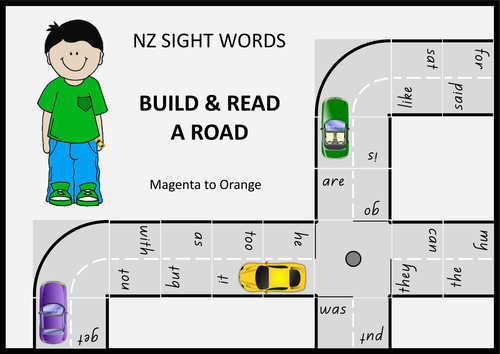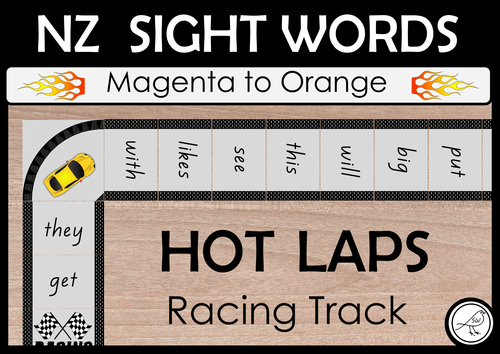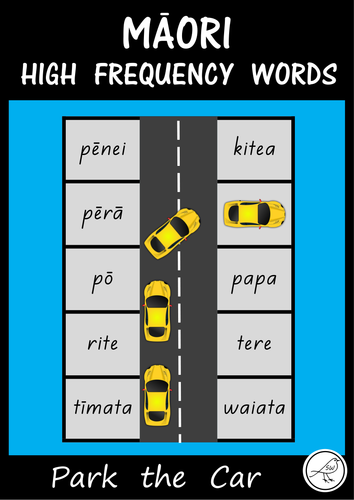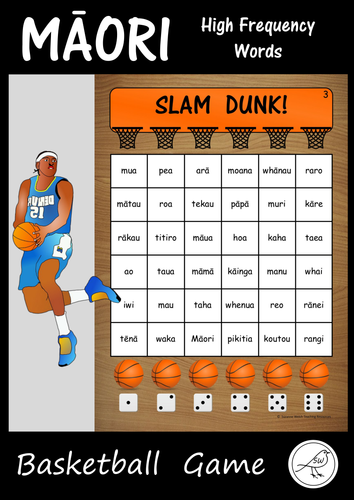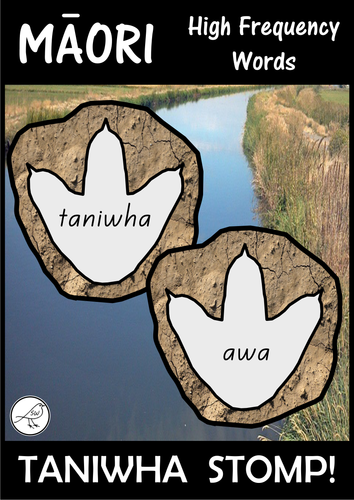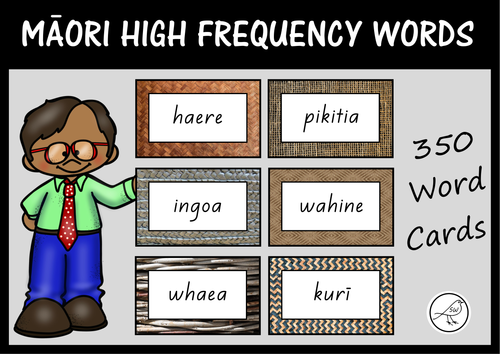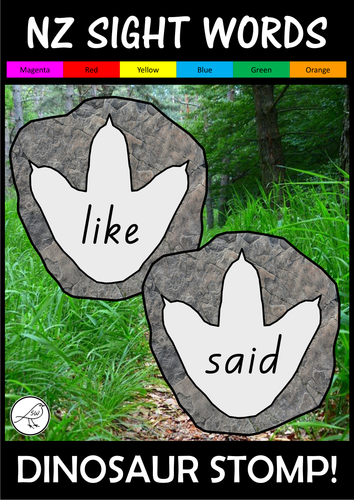
377Uploads
165k+Views
10k+Downloads
All resources

Christmas Secret Code Wheel - Alphabet & Numbers (jumbled)
Children love mystery and being a detective! Your students will have so much fun making and using these secret code wheels during the Christmas season.
This template has the alphabet on the outer wheel and numbers 1-26 (jumbled) on the inner wheel. See below for other options.
Instructions:
1. Colour the picture on the inner wheel.
2. Cut both of the wheels out.
3. Join the wheels together by using a split pin (otherwise known as a brad pin).
4. Use your code wheel to find out the answers to the jokes that are written in code.
5. Make up your own Christmas code writing and record on the writing templates that are provided.
6. Give your secret code writing to someone else to decipher.
Included:
♦ Teacher notes / instructions.
♦ Code wheel template – 16 different black/white pictures to choose from.
♦ 2 Christmas jokes to decipher.
♦ Writing templates to record your own secret message.
The 16 Pictures:
snowman, snowflake, star, Christmas tree, Santa, Santa (head), reindeer, reindeer (head), stocking, sleigh, gift, wreath, candle, bells, holly, flying elf.
Other templates available in my store:
Alphabet and numbers (ordered)
Alphabet and alphabet (ordered)
Alphabet and alphabet (jumbled)
Alphabet and symbol
Blank template
Also available in a money saving BUNDLE.
© Suzanne Welch Teaching Resources

Christmas Secret Code Wheel - Alphabet & Numbers (ordered)
Children love mystery and being a detective! Your students will have so much fun making and using these secret code wheels during the Christmas season.
This template has the alphabet on the outer wheel and numbers 1-26 (ordered) on the inner wheel. See below for other options.
Instructions:
1. Colour the picture on the inner wheel.
2. Cut both of the wheels out.
3. Join the wheels together by using a split pin (otherwise known as a brad pin).
4. Use your code wheel to find out the answers to the jokes that are written in code.
5. Make up your own Christmas code writing and record on the writing templates that are provided.
6. Give your secret code writing to someone else to decipher.
Included:
♦ Teacher notes / instructions.
♦ Code wheel template – 16 different black/white pictures to choose from.
♦ 2 Christmas jokes to decipher.
♦ Writing templates to record your own secret message.
The 16 Pictures:
snowman, snowflake, star, Christmas tree, Santa, Santa (head), reindeer, reindeer (head), stocking, sleigh, gift, wreath, candle, bells, holly, flying elf.
Other templates available in my store:
Alphabet and numbers (jumbled)
Alphabet and alphabet (ordered)
Alphabet and alphabet (jumbled)
Alphabet and symbol
Blank template
Also available in a money saving BUNDLE.
© Suzanne Welch Teaching Resources

Facts about New Zealand – Flag Craft
A great way to learn about New Zealand / Aotearoa.
2 Different Options:
♦ Flags with facts.
♦ Flags with a blank side (write your own fact, draw a picture, etc).
There are 30 different facts to (hopefully!) enable each of your students to have a different fact.
Two flags per A4 size paper.
Finished flag size is approximately 13.5cm x 7cm.
Use a wooden skewer (or something like a drinking straw) to make the flagpole.
Examples of the Facts:
♦ The Māori name for New Zealand is Aotearoa. This word means “Land of the Long White Cloud."
♦ New Zealand has many volcanoes. This is because it is located on the edge of the Pacific Ring of Fire.
♦ Sir Edmund Hillary, the first person to climb Mount Everest in 1953, was a New Zealander.
♦ The biggest city in New Zealand is Auckland. The capital city is Wellington.
♦ New Zealand is home to the heaviest insect in the world, the Giant Weta.
**********************************************************************
© Suzanne Welch Teaching Resources

The Treaty of Waitangi - Flip Flap Booklet
This is a booklet that covers some basic information about The Treaty of Waitangi:
♦ WHAT - what is it?
♦ WHO - who signed it?
♦ WHEN - when was it signed?
♦ WHERE - where was it signed?
♦ WHY - why was it necessary?
There are four different flag options for the cover page:
♦ United Tribes Flag
♦ Union Jack
♦ Current NZ Flag
♦ Tino Rangatiratanga
There are three different versions:
♦ Pages with text.
♦ Blank pages – picture of flag with the words ‘The Treaty of Waitangi’ on the cover.
♦ Blank pages – picture of flag with the words ‘Te Tiriti o Waitangi’ on the cover.
The blank templates give you and your students freedom to write and/or draw whatever you wish. It is a great publishing option for independent research.
Please note that this is a very basic outline of the who, what, when, where and why. It is difficult to condense such a huge topic into a few brief sentences, but it is a great starting point for further discussion/research, etc.
Each booklet is made from one piece of A4 paper.
**********************************************************************
© Suzanne Welch Teaching Resources

Editable Labels – Bee Theme
A set of cute editable labels for your classroom, all with a bee theme.
Editable – simply click where it says ‘edit’ to change the text. You can also change the font, font size, font colour and location of the text box.
There are 5 different types of labels (all shown on cover page above).
♦ Bee pointing at blackboard (2 labels per page)
♦ Bee hovering over sign (6 labels per page)
♦ Bee holding sign on stick (6 labels per page)
♦ Bees holding sign between them (3 labels per page)
♦ Bee holding long sign (5 labels per page)
Designed on A4 size paper.
This is a powerpoint file.
**********************************************************************
© Suzanne Welch Teaching Resources

Award Certificates – Bee Theme
A set of gorgeous award certificates for your students, all with a bee theme.
Write the students name and a little message in the white space at the bottom of the certificate.
There are two sets of certificates included in this resource. The sets have the same pictures but different wording.
Set 1:
Busy Bee Award
Reading Award
Writing Award
Attitude Award
Kindness Award
Effort Award
Helpfulness Award
Learning Award
Set 2:
Bee-utiful Worker
Bee-utiful Reading
Bee-utiful Writing
Bee-utiful Attitude
Bee-utiful Kindness
Bee-utiful Effort
Bee-utiful Helping
Bee-utiful Learning
Designed on A4 size paper.
Two certificates per page.
**********************************************************************
© Suzanne Welch Teaching Resources

New Zealand Sight Words – Green and Orange - Trace Write Cut Paste
These activity sheets are for sight words at the Green and Orange level of the NZ colour wheel.
A total of 112 activity sheets.
Students colour the focus word, trace it, write it, then write it in a sentence. After that, they cut the letter tiles out and paste them into the empty boxes.
There are additional letter tiles for words that are under 8 letters in length. Students will need to sort out which letters they need to keep to make the word.
There are 2 lines on the activity sheet for your students to write the sentence.
Words are written with the NZ Basic Script font. The letter shapes are the same as those recommended in the NZ Ministry of Education Handbook – ‘Teaching Handwriting’.
The high frequency words align to the NZ reading colour wheel:
♦ Green (49 words)
♦ Orange (63 words)
These worksheets are also available for the following reading levels:
* Magenta and Red
* Yellow and Blue
Words Used:
Green:
always good walked know please them use want feel just left best house old their right over love still took thank you school much brother sister round another myself new some asked called made people children away water how Mrs if I’m Mr who didn’t can’t after our time most
Orange:
man think long things wanted eat everyone two thought dog well more I’ll tree shouted us other food through way been stop must red door sea these began boy animals never work first lots that’s gave something bed may found live say night small three head town I’ve around every garden fast only many laughed let’s suddenly told word forgot better bring push
**********************************************************************
© Suzanne Welch Teaching Resources

New Zealand Sight Words – Build and Read a Road
A fantastic sight word activity …. particularly for your boys.
Build a road and drive a toy car along it, reading the sight words as you drive past them.
For sight words at the Magenta, Red, Yellow, Blue, Green and Orange levels of the NZ reading colour wheel.
You can use this resource to make up all sorts of activities and games. For example …
1. Make a road that is in the form of a loop. Roll a dice and travel that many spaces along the road, reading the sight words as you go. Have a marker on one of the words (eg a toy house on the word ‘into’) and every time you pass that marker you score one point. Who can score 10 points first?
2. As above, but when you land on a word you count how many letters it has. You say the word out loud that many times. For example, if you land on the word ‘little’ you say it 6 times.
3. The teacher (or a buddy) says a word. Drive your car to that word.
4. The teacher (or a buddy) gives a clue to a word. Drive your car to that word. For example, drive your car to a word that starts with b and ends with k. Or, drive your car to a 3 letter word that rhymes with ‘man’.
Because there are corners, roundabouts and T intersections, a different road layout can be built each time. Great for your creative learners.
Included:
♦ Road pieces with sight words – for Magenta to Orange levels.
♦ Blank road pieces (to add additional words if necessary).
♦ Road parts – corners, roundabouts and T intersections (these do not have words on them).
♦ Road stops – petrol, mechanic, house and car park (these are just for fun, use them if you want to).
♦ Teacher notes and a word list.
Ink friendly - all in black/grey/white.
The font used is ‘NZ Basic Script’. The letter shapes are the same as those recommended in the NZ Ministry of Education Handbook – ‘Teaching Handwriting’. The size of the font gets smaller as the levels progress.
It is suggested that you put a little coloured dot on the back of the road pieces before laminating (eg a yellow dot on the back of the road pieces for words at the yellow level). That way if the pieces at each level get muddled, you’ll easily be able to sort them back into the correct groups.
You will need to provide the toy cars.
This resource is very versatile. Print more than one copy to make more road pieces, combine more than one set, etc.
Made on A4 size paper.
4 road pieces (8 words) on each A4 page.
2 road parts (corners, etc) on each A4 page.
Each road piece measures approximately 130mm x 85mm.
The corners, etc, measure approximately 130mm x 130mm
© Suzanne Welch Teaching Resources

New Zealand Sight Words – Hot Laps Racing Track
An engaging sight word activity …. particularly for your boys.
Build a racing track and drive a toy car along it, reading the sight words as you go.
This resource contains sight words at the Magenta to Orange levels of the NZ reading colour wheel.
Sight words are written on a piece of ‘racing track’. Print them off, laminate, and cut. Use as many pieces as you wish and combine them with the corners, starting grid and finishing line. Your students can design their very own racing track!
You can use this resource to make up all sorts of activities and games. For example …
* Make a racing track that is in the form of a loop. Roll a dice and travel that many spaces along the race track, reading the sight words as you go. Every time you pass the finishing line (chequered squares or flags) you score one point. Who can score 10 points first?
* As above, but when you land on a word you count how many letters it has. You say the word out loud that many times. For example, if you land on the word ‘little’ you say it 6 times.
* The teacher (or a buddy) says a word. Drive your car to that word.
* The teacher (or a buddy) gives a clue to a word. Drive your car to that word. For example, drive your car to a word that starts with b and ends with k. Or, drive your car to a 3 letter word that rhymes with ‘man’.
A different racing track layout can be built each time. Great for your creative learners!
Included:
♦ Track pieces with sight words (Magenta to Orange levels).
♦ Blank track pieces (to add additional words if necessary).
♦ Corners, starting grid and finish line.
♦ Teacher notes and a word list.
Ink friendly - all in black/grey/white.
The font used is ‘NZ Basic Script’. The letter shapes are the same as those recommended in the NZ Ministry of Education Handbook – ‘Teaching Handwriting’. Each word is written on a faint grey line.
It is suggested that you put a little coloured dot on the back of the track pieces before laminating (eg a yellow dot on the back of the track pieces for words at the yellow level). That way if the pieces at each level get muddled, you’ll easily be able to sort them back into the correct groups.
You will need to provide the toy cars.
This resource is very versatile. Print more than one copy to make more track pieces, combine more than one set, etc.
Made on A4 size paper.
4 track pieces (4 words) on each A4 page.
Each track piece measures approximately 130mm x 85mm.
The corners measure approximately 130mm x 130mm
The starting grid measure approximately 130mm x 170mm.
© Suzanne Welch Teaching Resources

Māori High Frequency Words – Flip the whitebait fritters
A fun hands-on activity that will help your learners to read a wide range of high frequency Māori words.
Print and laminate the whitebait fritters. Students use a kitchen spatula to flip the word over.
Ideas:
• Read the word out loud and flip it over with a kitchen spatula.
• Read the word out loud and use a kitchen spatula to place the fritter in/out of a frying pan. (Use a real frying pan or use the one included).
• Be the first person to flip the fritter over with your kitchen spatula when the teacher calls the word (small group activity).
• Have a selection of fritters and arrange them like a BINGO card. Flip the fritter over when the teacher calls a word that you have. The first person to have all of their fritters turned over is the winner.
• Use them as a wall display.
• Print out 2 sets and play a memory game (matching pairs) with them. Turn the fritters face down. Take turns at flipping 2 fritters over. If they match you keep the fritters, if not it’s the next person’s turn.
• Read the word on the fritter. Write it down and then flip it.
Included:
♦ 350 whitebait fritters
♦ Blank template (for additional words if necessary)
♦ Teacher notes
♦ Fry pan
6 whitebait fritters on each A4 size page.
The font used is ‘NZ Basic Script’. The letter/number shapes are the same as those recommended in the NZ Ministry of Education Handbook – ‘Teaching Handwriting’.
This resource has been created to support Māori medium education in Aotearoa. A helpful resource for full immersion and bilingual classes.
Examples of words used: ngā, tētahi, mahi, reira, waka, whenua, pikitia, rua, tuatahi, rongo, karanga, āwhina, waho, kau, hua, tamaiti, ngahere, ako, paku, māna, whakahaere.
For a full list of the words used in this resource please go to the tki website listed above. They are the first 350 words in frequency order (te to oho)
**********************************************************************
© Suzanne Welch Teaching Resources

Māori High Frequency Words – Park the car
A set of ‘Park the car’ activity sheets for 350 high frequency Māori words.
A great hands-on literacy activity that will engage many of your students (particularly your boys). Drive a toy car and park it on the correct word.
There are 35 carparks (A4 sheets) that list the words in frequency order.
Included:
♦ Set 1 – white carparks
♦ Set 2 – grey carparks
♦ Blank templates included so you can custom design a car park for your students.
♦ Car pictures (these may be used as a temporary solution if you don’t have any toy cars)
♦ Teacher notes / suggestions for use.
Words are written with the NZ Basic Script font.
• More than one car park can be lined up to make it more challenging.
• The sheets are numbered from 1-35.
• You can send a ‘car park’ home with your students as an alternative way of reinforcing high frequency word learning at home.
• Reluctant readers may feel more encouraged to participate if they bring in a toy car from home to use. Perhaps link it to a writing activity as well.
• It doesn’t have to be a toy car … it could be a truck, motorbike, horse etc.
This resource has been created to support Māori medium education in Aotearoa. A helpful resource for full immersion and bilingual classes.
Examples of words used: ngā, tētahi, mahi, reira, waka, whenua, pikitia, rua, tuatahi, rongo, karanga, āwhina, waho, kau, hua, tamaiti, ngahere, ako, paku, māna, whakahaere.
For a full list of the words used in this resource please go to the tki website listed above. They are the first 350 words in frequency order (te to oho)
**********************************************************************
© Suzanne Welch Teaching Resources

Māori High Frequency Words - BINGO
This resource contains 4 different BINGO games that are made with the first 200 high frequency Māori words. Each game contains 50 words.
The Games:
♦ Game 1 - words 1-50
♦ Game 2 - words 51-100
♦ Game 3 - words 101-150
♦ Game 4 - words 151-200
Each Game Includes:
♦ word cards (print and cut)
♦ 15 x coloured BINGO mats
♦ 15 x black/white BINGO mats
The coloured mats have a woven texture border. . The borders are the same as those used on my WORD CARDS. A black/white set of BINGO mats are also provided. If desired, your students could decorate the borders on these mats to personalise them.
♦ 3 BINGO mats on each A4 size page
♦ 12 words on each BINGO mat
This resource has been created to support Māori medium education in Aotearoa. A helpful resource for full immersion and bilingual classes.
Examples of words used: haere, tētahi, korero, ki, rawa, au, reira, reo, taea, whare, whakaaro, tekau, moana, tāngata, rongo, ingoa, hiahia, kitea, karanga, tuna, tangi, ehara, huarahi, pou.
For a full list of the words used in this resource please go to the tki website listed above. They are the first 200 words in frequency order (te to āhuatanga)
**********************************************************************
© Suzanne Welch Teaching Resources

Māori High Frequency Words – Basketball Game
‘Slam Dunk’ is a super-fun basketball themed game that will help your students practise reading high frequency Māori words.
There are 10 different game boards that contain the first 360 words of a list on TKI called ‘1000 frequency words of Māori – in frequency order’.
Included:
♦ 10 x coloured game boards
♦ 10 x black/white game boards
♦ Instructions
The words are written in frequency order and the games are numbered 1-10 in the top right corner.
How to Play:
Equipment Needed: one dice, 6 counters and one game board per player.
Players take alternate turns.
1. Place one counter on each of the 6 basketballs.
2. Roll the dice.
3. Find that number underneath the basketball and move that counter to the first word. Read the word out loud before placing your counter on top of it. The other player(s) checks you have read it correctly.
4. Continue in this way, moving a counter up one more space each time.
♦ Who is the first person to score a slam dunk? (when a counter reaches the basketball net at the top of the gameboard).
♦ Who is the first person to score all 6 slam dunks?
This resource has been created to support Māori medium education in Aotearoa. A helpful resource for full immersion and bilingual classes.
**********************************************************************
© Suzanne Welch Teaching Resources

Māori High Frequency Words – Taniwha Stomp
A fun resource for learning to read the first 350 high frequency Māori words.
Included:
♦ 350 coloured footprints with mud background
♦ 350 black/white footprints
♦ Blank templates (coloured and black/white)
♦ Teacher notes
Ideas for use:
♦ Place a track of footprints around the classroom. Students walk around the track, stomping on the footprints and reading the words (in a taniwha voice) as they go.
♦ Scatter the footprints on the floor. The teacher says a word. Which student can be the first to stomp on the correct word? (Be careful of little toes!)
♦ Print 2 sets and play ‘memory’. Place the cards face down. Students take turns at turning 2 cards over. If the words are the same, they keep the cards and have another turn. Who has the most pairs of cards at the end?
♦ Display the words around the classroom and go on a ‘taniwha hunt’. Who can find the word ‘haere’? Give your students a magnifying glass if you have some.
♦ Give the students a copy of the blank template (black and white). They can write a sight word in the footprint and decorate it. Perhaps you could staple a few together and make a little booklet.
♦ Create a ‘sentence stomp’. Make a sentence with the words and stomp it!
4 footprints per A4 size page. Enlarge to A3 if you want larger footprints.
Blank templates are provided for you to add words if necessary.
The font used is ‘NZ Basic Script’. The letter shapes are the same as those recommended in the NZ Ministry of Education Handbook – ‘Teaching Handwriting’.
**********************************************************************
© Suzanne Welch Teaching Resources

Māori High Frequency Words – Fishing Activity
A great hands-on activity to reinforce the reading of 350 Māori high frequency words.
Make a fishing pole using a stick, string and magnet. Attach a paper clip (or split pin) to the fish and voilá! It’s time to go fishing.
These fish could also be used as a classroom ‘word wall’ display or used for activities in a literacy centre.
6 fish per A4 page
3 fish swimming left / 3 fish swimming right
Blank fish are also provided so you can add extra words if necessary.
The 350 words have been divided into 7 groups of 50 words. Each group is a different colour (pink, red, yellow, blue, green, orange, turquoise).
The font used is ‘NZ Basic Script’. The letter shapes are the same as those recommended in the NZ Ministry of Education Handbook – ‘Teaching Handwriting’.
This resource has been created to support Māori medium education in Aotearoa. A helpful resource for full immersion and bilingual classes.
Examples of words used: ngā, tētahi, mahi, reira, waka, whenua, pikitia, rua, tuatahi, rongo, karanga, āwhina, waho, kau, hua, tamaiti, ngahere, ako, paku, māna, whakahaere.
For a full list of the words used in this resource please go to the tki website listed above. They are the first 350 words in frequency order (te to oho)
**********************************************************************
© Suzanne Welch Teaching Resources

Māori High Frequency Words – Handwriting copy cards
Handwriting copy cards with 350 high frequency Māori words.
• 35 cards with 10 words on each card.
• 4 cards on each A4 size page.
• Cards are numbered from 1-35 in the top right corner.
• Dashed middle line.
• The words are listed in order of frequency.
The font used is ‘NZ Basic Script’. The letter shapes are the same as those recommended in the NZ Ministry of Education Handbook – ‘Teaching Handwriting’.
This resource has been created to support Māori medium education in Aotearoa. A helpful resource for full immersion and bilingual classes.
Examples of words used: ngā, tētahi, mahi, reira, waka, whenua, pikitia, rua, tuatahi, rongo, karanga, āwhina, waho, kau, hua, tamaiti, ngahere, ako, paku, māna, whakahaere.
For a full list of the words used in this resource please go to the tki website listed above. They are the first 350 words in frequency order (te to oho)
**********************************************************************
© Suzanne Welch Teaching Resources

Māori High Frequency Words – 350 word cards
A set of 350 cards with high frequency Māori words displayed on them.
The words have been separated into groups of 50 and each group has a different border. Click on ‘Preview’ above for a closer look at the different border designs (woven texture theme).
4 cards on each A4 size page.
Blank cards are also provided for you to add additional words if desired.
The font used is ‘NZ Basic Script’. The letter shapes are the same as those recommended in the NZ Ministry of Education Handbook – ‘Teaching Handwriting’.
This resource has been created to support Māori medium education in Aotearoa. A helpful resource for full immersion and bilingual classes.
Examples of words used: ngā, tētahi, mahi, reira, waka, whenua, pikitia, rua, tuatahi, rongo, karanga, āwhina, waho, kau, hua, tamaiti, ngahere, ako, paku, māna, whakahaere.
For a full list of the words used in this resource please go to the tki website listed above. They are the first 350 words in frequency order (te to oho)
**********************************************************************
© Suzanne Welch Teaching Resources

New Zealand High Frequency Sight Words - 'Clip and Flip' Word Frames
A full set of ‘clip and flip’ cards from magenta to orange!
Sight words are written in code (word frames) – can your students work out the correct word?
A word frame and 3 words are displayed on a funky i-pad. The colour of the i-pad is the same as the level on the colour wheel (eg ‘Red’ words have a red i-pad). Your students study the 3 words and decide which word fits the frame. They pin a clothes peg under the word they select then flip the card over to see if they are correct.
Please note that the cards do not come with the answers already on the back. You will need to indicate the answer prior to laminating the cards. This is achieved by simply placing a pencil tick in the correct location behind the coloured border. Instructions are included in the resource.
A great hands-on, critical thinking literacy activity for your students.
* Use these cards in a literacy centre, in a ‘word of the day’ discussion, as a writing activity (write the word in the word frame then wipe off) etc ….
* 2 i-pads on each A4 size paper.
* Word lists included for each set of words.
High frequency words align to the NZ reading colour wheel:
♦ magenta (25 words)
♦ red (28 words)
♦ yellow (31 words)
♦ blue (37 words)
♦ green (49 words)
♦ orange (63 words)
© Suzanne Welch Teaching Resources

New Zealand Sight Words – ‘Make it’ mats
Activity mats for students working on their sight words from the Magenta to Orange level of the NZ reading colour wheel.
Print and laminate the mats. Students make the words using alphabet letters (eg magnetic letters, scrabble tiles, letters written on milk bottle lids, letters written on pieces of card …)
The type of activity that your ‘hands-on learners’ will appreciate.
Great for a learning station, early finisher activity, etc.
This activity will reinforce reading and spelling.
The font used is ‘NZ Basic Script’. The letter shapes are the same as those recommended in the NZ Ministry of Education Handbook – ‘Teaching Handwriting’.
49 ‘Make it’ mats in total.
• Magenta – 5 mats
• Red – 6 mats
• Yellow – 7 mats
• Blue – 8 mats
• Green – 10 mats
• Orange – 13 mats
5 words on each A4 page.
The level of each mat is written in the bottom right corner.
Words Used:
Magenta:
I like going is mum look the am said to at went in me here my on dad a and come up can sat for
Red:
we get put with go no they today was where you she he this are will as too not but likes down big it little see so looked
Yellow:
when came one it’s make an all back day into oh out play ran do take that then there him saw his got looking of yes mother from her baby father
Blue:
have help here’s home let need again laugh soon talked could had find end making under very were your walk girl about don’t last what now goes because next than fun bag coming did or cake run
Green:
always good walked know please them use want feel just left best house old their right over love still took thank you school much brother sister round another myself new some asked called made people children away water how Mrs if I’m Mr who didn’t can’t after our time most
Orange:
man think long things wanted eat everyone two thought dog well more I’ll tree shouted us other food through way been stop must red door sea these began boy animals never work first lots that’s gave something bed may found live say night small three head town I’ve around every garden fast only many laughed let’s suddenly told word forgot better bring push
**********************************************************************
© Suzanne Welch Teaching Resources

New Zealand Sight Words – Dinosaur Stomp!
A fun NZ sight word resource for the Magenta to Orange levels of the colour wheel.
2 sets provided:
♦ coloured (footprint on rock, like a fossil)
♦ black and white
4 footprints per A4 size page.
Blank templates also provided (for additional words if necessary).
The font used is ‘NZ Basic Script’. The letter shapes are the same as those recommended in the NZ Ministry of Education Handbook – ‘Teaching Handwriting’.
Print and laminate the footprints that you wish to use. If you are wanting to differentiate the sets of footprints then I suggest you put a coloured dot on the back before laminating. Eg. put a red dot on the back of the ’red’ words.
Ideas for Use:
♦ Place a track of footprints around the classroom. Students walk around the track, stomping on the footprints and reading the words (in a dinosaur voice) as they go.
♦ Scatter the footprints on the floor. The teacher says a word. Which student can be the first to stomp on the correct word? (Be careful of little toes!)
♦ Print 2 sets and play ‘memory’. Place the cards face down. Students take turns at turning 2 cards over. If the words are the same, they keep the cards and have another turn. Who has the most pairs of cards at the end?
♦ Bury the footprints in the sandpit and go on a ‘fossil hunt’.
♦ Display the words around the classroom and go on a ‘fossil hunt’. Who can find the word ‘like’? Give you students a magnifying glass if you have some.
♦ Give the students a copy of the blank template (black and white). They can write a sight word in the footprint and decorate it. Perhaps you could staple a few together and make a little booklet.
♦ Create a ‘sentence stomp’. Make a sentence with the words and stomp it!
♦ Display as a track of footprints all around your classroom wall.
© Suzanne Welch Teaching Resources





